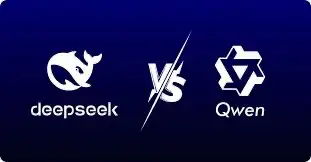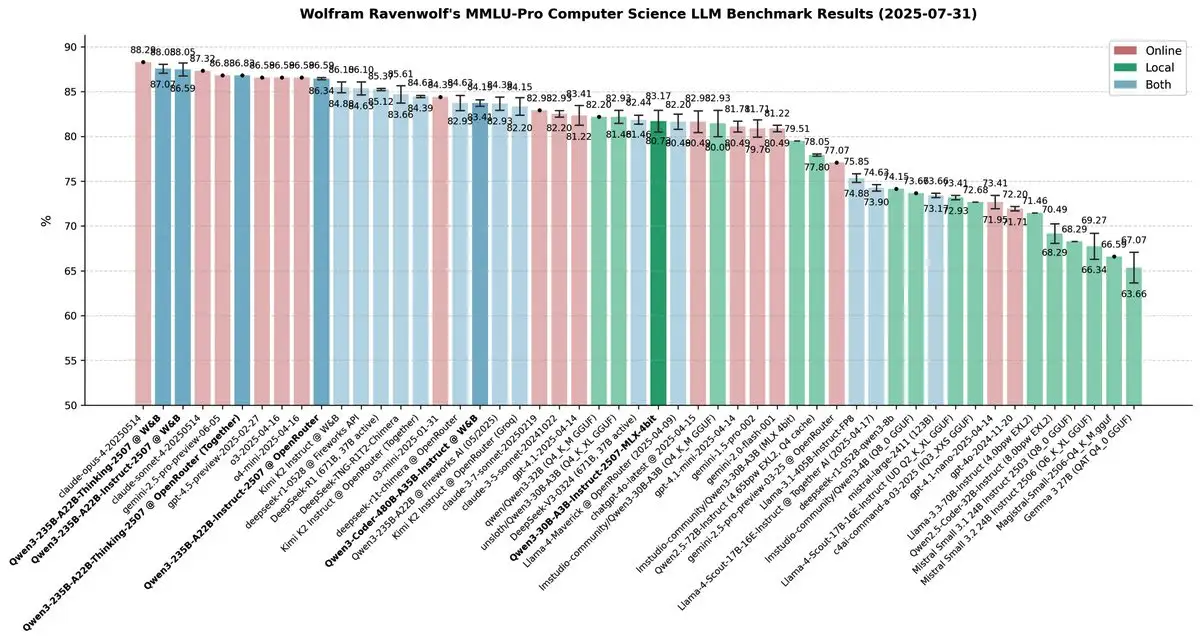DeepSeek and Qwen3 Compared: Which Open LLM Performs Better?
.webp)
Eric Walker · 1, August 2025
As the landscape of open-source large language models continues to expand, two names have recently garnered significant attention: DeepSeek and Qwen3. Both models represent state-of-the-art offerings from major AI research groups, and both claim to deliver performance that rivals or exceeds GPT-3.5 or even GPT-4 in some benchmarks. But how do they actually perform when placed head-to-head?
In this blog post, I dive into the performance, capabilities, and unique characteristics of DeepSeek and Qwen3, comparing them through both quantitative benchmarks and qualitative testing.

Overview of the Models
DeepSeek is developed by the DeepSeek team, emerging from the broader wave of Chinese open-source AI development. It emphasizes robust instruction-following, reasoning, and coding capabilities. The DeepSeek series includes models ranging from 1.3B to 67B parameters, with pre-trained and instruction-tuned variants.
Qwen3, developed by Alibaba’s DAMO Academy, is the latest iteration in the Qwen series. Qwen3 models come in various sizes, from the lightweight Qwen3-0.5B up to Qwen3-72B, and they include both base and chat-tuned variants. Notably, Qwen3 models support multi-turn dialogue, advanced reasoning, and multilingual capabilities out-of-the-box.
Benchmark Testing
To get a clearer picture, I ran both DeepSeek-7B-Instruct and Qwen3-7B-Chat through a set of benchmark evaluations including:
MMLU (Massive Multitask Language Understanding)
- DeepSeek-7B: ~65.2%
- Qwen3-7B: ~67.5%
Qwen3 shows slightly better performance on this diverse academic benchmark, especially in categories like history, law, and computer science.
HumanEval (Code Generation)
- DeepSeek-7B: 61.8%
- Qwen3-7B: 57.3%
Here, DeepSeek clearly outperforms Qwen3. This aligns with DeepSeek’s emphasis on programming tasks and its optimized pretraining on code-heavy datasets.
MT-Bench (Multi-turn Chat Evaluation)
- DeepSeek-7B: 7.1 (average)
- Qwen3-7B: 7.5 (average)
Qwen3 feels more coherent in extended conversations, especially when handling role play or maintaining tone consistency over long interactions.

Qualitative Evaluation
Prompt: “What are the pros and cons of nuclear energy?”
- Qwen3-7B produced a well-structured essay with clear arguments, nuanced language, and citations. It also balanced tone and avoided bias.
- DeepSeek-7B also generated a competent response, though slightly more mechanical in tone and with some repetition in phrasing.
Prompt: “Write a Python function to parse a CSV file and return JSON.”
- DeepSeek-7B wrote concise and correct code, handled edge cases, and included docstrings.
- Qwen3-7B produced functional code, but lacked some error checking and overused comments.
Usability and Deployment
Both models are available under permissive licenses:
- DeepSeek is released under the MIT License.
- Qwen3 is available under a modified Apache-2.0 license (with some restrictions for commercial use in China).
Both models can be run with Hugging Face’s transformers library or integrated into services via vLLM and TGI. I tested both on a local 24GB VRAM GPU setup, and inference speed was comparable, though DeepSeek tended to be slightly faster due to optimized quantization support (via INT4/INT8).
Multilingual Performance
Qwen3’s multilingual prowess is evident, particularly in Asian and European languages. It handles Chinese, Japanese, Korean, French, and German much more naturally than DeepSeek, which appears to prioritize English and Chinese.
For example:
- Translating and summarizing a Japanese article: Qwen3 produced fluent results.
- Responding to a French user question: DeepSeek replied accurately but awkwardly phrased.
Final Verdict
| Category | Winner |
|---|---|
| Reasoning & QA | Qwen3 |
| Coding | DeepSeek |
| Multilingual | Qwen3 |
| Speed & Efficiency | DeepSeek |
| Chat Experience | Qwen3 |
| Licensing | Tie |
If your focus is dialogue systems, multilingual interactions, or general Q&A, Qwen3 is a strong choice. If you’re developing developer tools, coding copilots, or require fast local inference, DeepSeek is a solid and reliable option.
Free DeepSeek & Qwen3 available on GlobalGPT, an all-in-one AI platform.
Conclusion
Both DeepSeek and Qwen3 are pushing the boundaries of what’s possible in open-source AI. The right choice ultimately depends on your use case. I recommend experimenting with both in real-world scenarios—these models are more accessible than ever.
As the AI space evolves, it’s exciting to see models like Qwen3 and DeepSeek bring innovation, competition, and accessibility to the forefront of LLM development.
Relevant Resources
